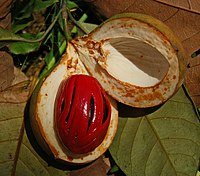
An Arabidopsis Callus Grafting Method to Test Cell-to-Cell Mobility of Proteins.
Sign Up to like & getrecommendations! Published in 2022 at "Methods in molecular biology"
DOI: 10.1007/978-1-0716-2132-5_20
Abstract: A callus is a semi-disorganized tissue that can be induced to develop from diverse tissues by the addition of exogenous hormones. The fast growth and ease of propagation have made callus cultures useful for creating… read more here.
Keywords: callus grafting; method test; arabidopsis callus; callus ... See more keywords

Microcalli Induction in Protoplasts Isolated from Embryogenic Callus of Date Palm.
Sign Up to like & getrecommendations! Published in 2017 at "Methods in molecular biology"
DOI: 10.1007/978-1-4939-7156-5_19
Abstract: Date palm (Phoenix dactylifera L.) production is severely hampered due to several pests and diseases. Biotechnological tools such as protoplast fusion appear as an alternative to ensure rapid genetic improvement and multiplication of this species.… read more here.
Keywords: protoplasts isolated; callus; date palm; date ... See more keywords

Unique chromoplast organisation and carotenoid gene expression in carotenoid-rich carrot callus
Sign Up to like & getrecommendations! Published in 2018 at "Planta"
DOI: 10.1007/s00425-018-2988-5
Abstract: Main conclusionThe new model orange callus line, similar to carrot root, was rich in carotenoids due to altered expression of some carotenogenesis-associated genes and possessed unique diversity of chromoplast ultrastructure.Callus induced from carrot root segments… read more here.
Keywords: carotenoid; callus; carrot; expression ... See more keywords

Shoot proliferation and callus regeneration from nodular buds of Drepanostachyum luodianense
Sign Up to like & getrecommendations! Published in 2018 at "Journal of Forestry Research"
DOI: 10.1007/s11676-018-0772-9
Abstract: This research reports on an efficient shoot proliferation and callus regeneration system for bamboo. Young, semi-lignified branches with one lateral bud from Drepanostachyum luodianense (Yi et R. S. Wang) Keng f. were used as explants.… read more here.
Keywords: proliferation callus; callus; medium; shoot proliferation ... See more keywords

Molecular cloning and characterization of five genes from embryogenic callus in Miscanthus lutarioriparius
Sign Up to like & getrecommendations! Published in 2020 at "Acta Physiologiae Plantarum"
DOI: 10.1007/s11738-020-03071-7
Abstract: The regeneration from embryogenic callus of higher plants in tissue culture is regulated by explants types and developmental stage and also regulated by some genes. In Miscanthus lutarioriparius, five candidate genes were selected to decide… read more here.
Keywords: molecular cloning; cloning characterization; callus; miscanthus lutarioriparius ... See more keywords

Efficient callus induction and plant regeneration of Malaysian indica rice MR219 using anther culture
Sign Up to like & getrecommendations! Published in 2021 at "Biocatalysis and agricultural biotechnology"
DOI: 10.1016/j.bcab.2020.101865
Abstract: Abstract Rice plant regeneration via anther culture possess several difficulties, these included early anther necrosis and high albinism frequency. In the present study, several biotic and abiotic factors were studied to develop an efficient protocol… read more here.
Keywords: rice; callus; indica rice; regeneration ... See more keywords

Callus culture and in vitro production of anthraquinone in Gynochthodes umbellata (L.) Razafim. & B. Bremer (Rubiaceae)
Sign Up to like & getrecommendations! Published in 2017 at "Industrial Crops and Products"
DOI: 10.1016/j.indcrop.2016.11.021
Abstract: Abstract Gynochthodes umbellata is a rare medicinal plant used in traditional systems of medicine for curing various ailments. It is a woody climber belonging to the family Rubiaceae. Its over collection from the wild population… read more here.
Keywords: production; acid; callus; anthraquinone ... See more keywords

A maizewin protein confers enhanced antiinsect and antifungal resistance when the gene is transgenically expressed in maize callus
Sign Up to like & getrecommendations! Published in 2020 at "Plant Gene"
DOI: 10.1016/j.plgene.2020.100259
Abstract: Abstract Maize is a crop of worldwide importance, but insects and plant pathogens limit sustainable production. The development of maize varieties with improved resistance will be facilitated by identification of relevant resistance alleles through appropriate… read more here.
Keywords: protein; callus; maize; transgenically expressed ... See more keywords

Influence of exogenous cinnamic acid on the production of chlorogenic acid in Cichorium intybus L cell culture
Sign Up to like & getrecommendations! Published in 2019 at "South African Journal of Botany"
DOI: 10.1016/j.sajb.2019.01.004
Abstract: Abstract Cichorium intybusL(C. intybus) is a source for several important secondary metabolites (SM), including 3-O-caffeoylquinic acid (CGA). Isolation of SM from field plants is difficult due to their batch to batch variation in response to… read more here.
Keywords: cinnamic acid; intybus; cell; callus ... See more keywords

Establishment of efficient callus genetic transformation system for Pyrus armeniacaefolia
Sign Up to like & getrecommendations! Published in 2021 at "Scientia Horticulturae"
DOI: 10.1016/j.scienta.2021.110429
Abstract: Abstract The purpose of the present study was to establish an efficient and stable callus genetic transformation system for Pyrus armeniacaefolia. Fruits 15 days after flowering were used for callus inducing. Major factors that influence… read more here.
Keywords: genetic transformation; system pyrus; transformation system; callus genetic ... See more keywords

Evaluation of Callus Cultures to Elucidate the Metabolism of Tebuconazole, Flurtamone, Fenhexamid, and Metalaxyl-M in Brassica napus L., Glycine max (L.) Merr., Zea mays L., and Triticum aestivum L.
Sign Up to like & getrecommendations! Published in 2020 at "Journal of agricultural and food chemistry"
DOI: 10.1021/acs.jafc.0c05277
Abstract: Plant cell cultures can be used to identify the metabolic degradation of pesticides in crops. Therefore, Brassica napus L., Glycine max (L.) Merr., Zea mays L. and Triticum aestivum L. were used to elucidate the… read more here.
Keywords: callus; metabolism; callus cultures; brassica napus ... See more keywords